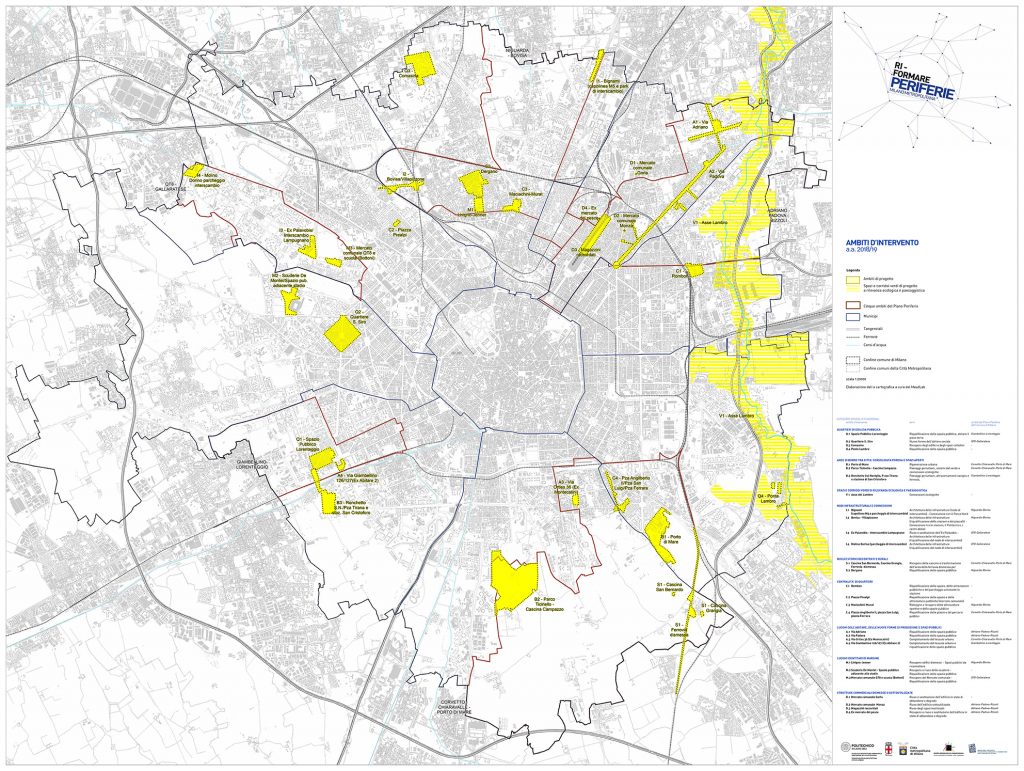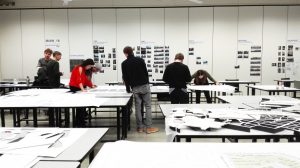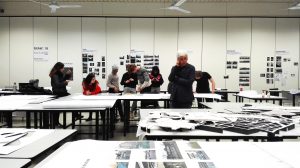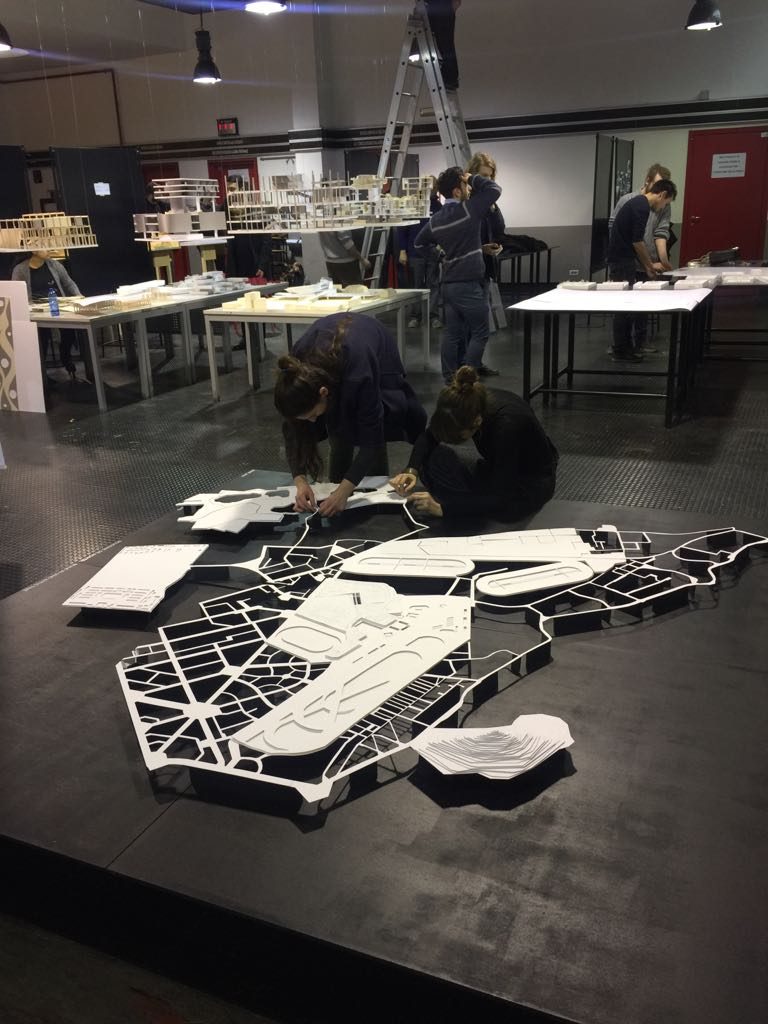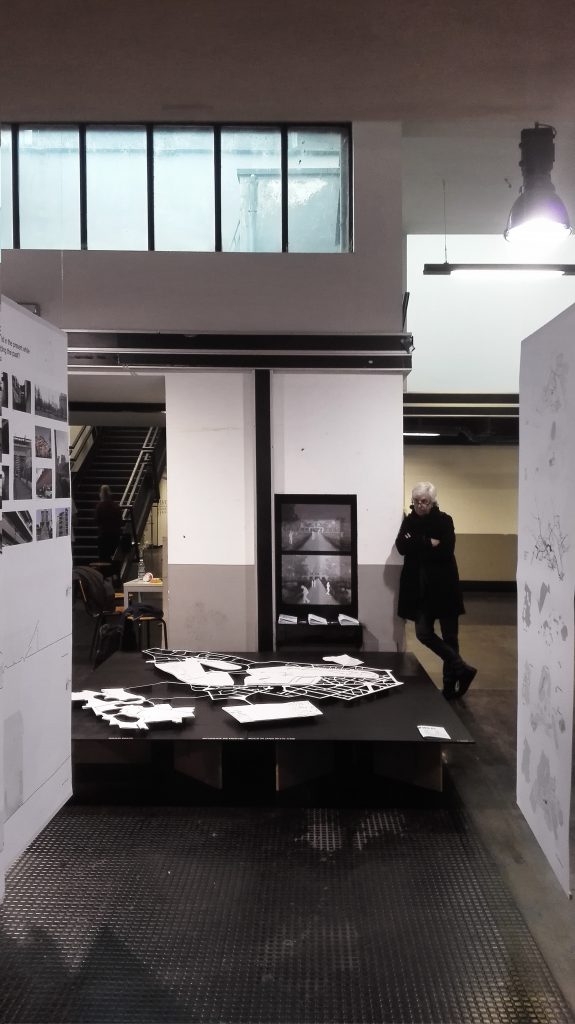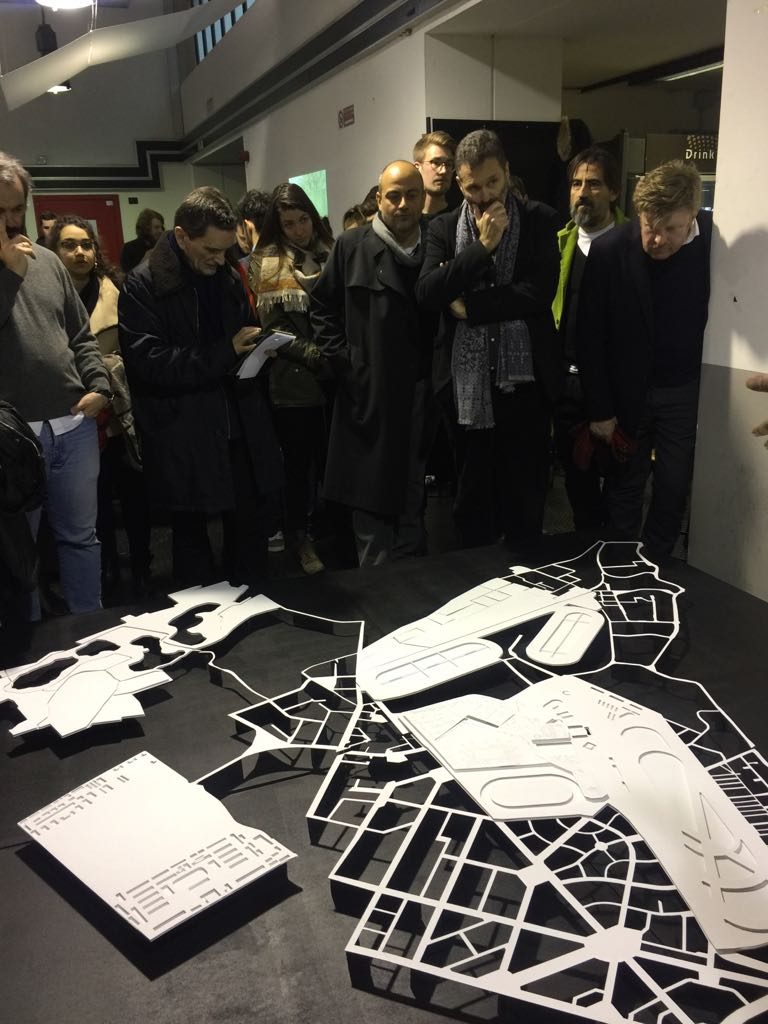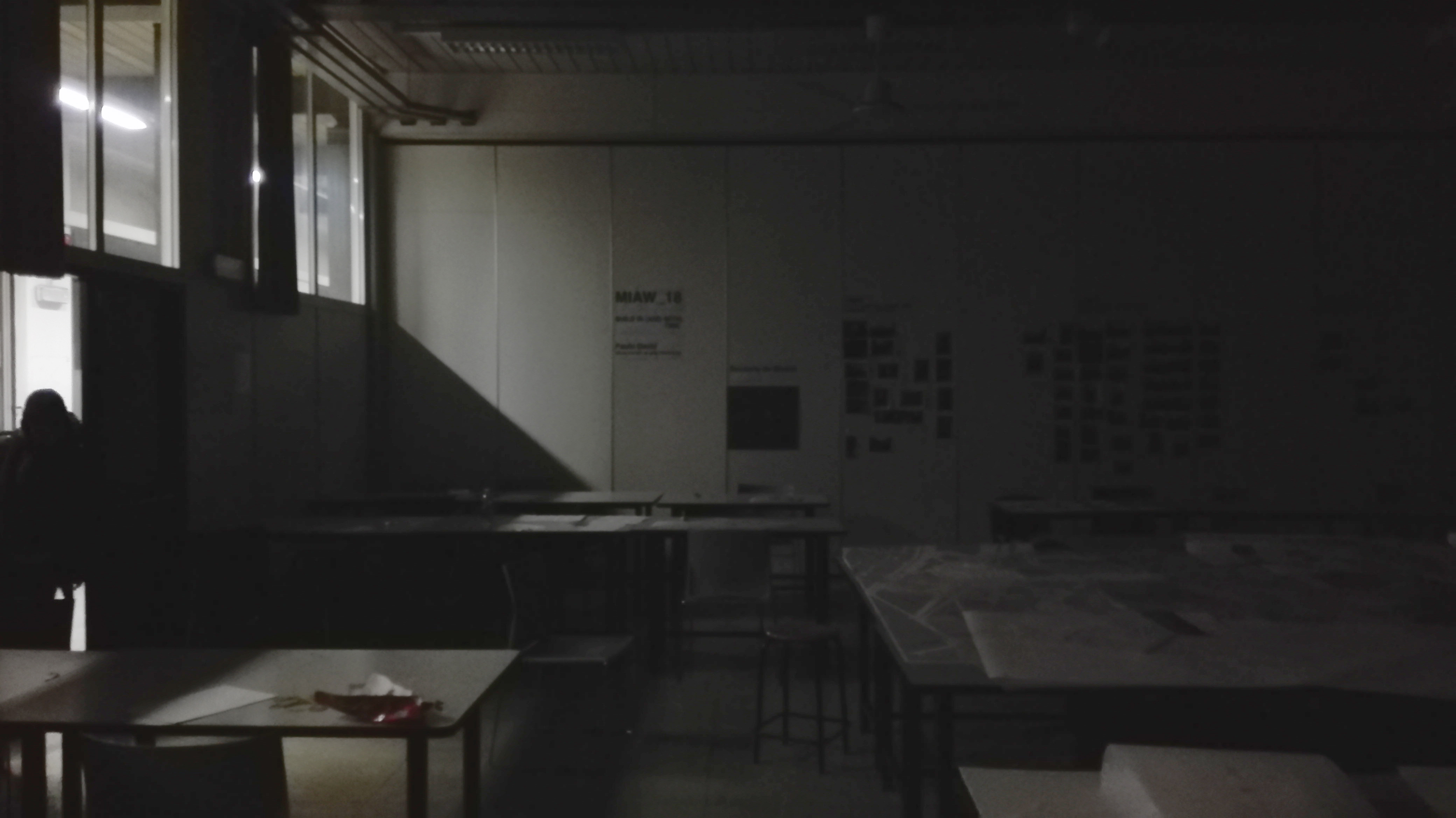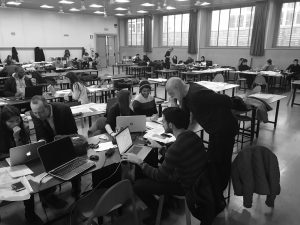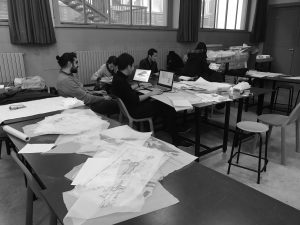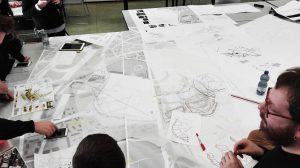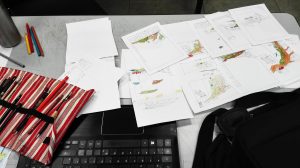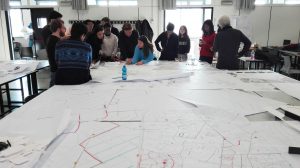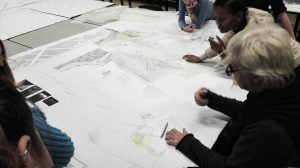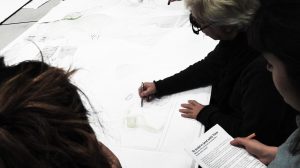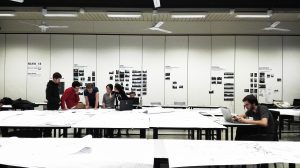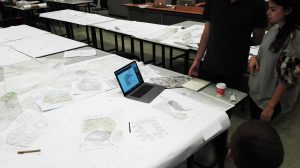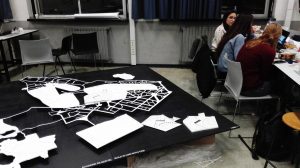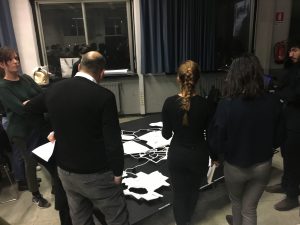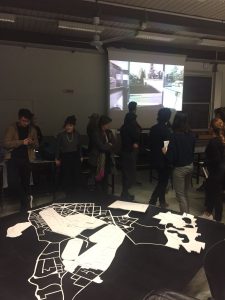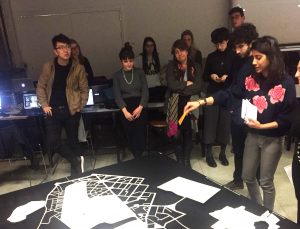RI-FORMARE PERIFERIE
Milano città metropolitana. 5 chances to make public space with nature.
Author Archives: Efisia Cipolloni
Site Analysis
Louise Wright_ Nature on the border
In natural systems, a corridor, is an area of habitat connecting wildlife populations separeted by human activities or structures. In urban fabrics, they are also places of movement, and generally connect but also disconnect.
We will look beyond conventional notions of urban design to modes of ecology and other knowledge bases to consider natural systems as a central urban design strategy, and the ground for more than human use. We will begin with the repair of natural systems that will at the same time also act as ‘urban’ infrastructure.
Through a strategy of removal of built form to create an open space of natural sustems, the existing built environment will be redefined by the relocation of the removed buildings and programs within existing areas and the new relationships therefore generated with open space. We will work on a macro and micro scale to redefine large open space while at the same time elements such as building entries, windows and canopies.
Louise Wright_Biography
Louise Wright is a practicing architect and a director of Baracco+Wright Architects. She has a PhD in Architecture from andalso is a sessional lecturer in design at RMIT University, Melbourne,Australia.
Louise is a Registered Architect in Victoria, Australia.
Louise has received an Australian ResearchCouncil Postgraduate Award (industry) scholarship and in 2012 she won theAustralian Architectural Services Award for client services.
Her PhD explores what architects know and theway architects know using their own modes of research accessing and transformingknowledge embedded within design.
Founded in 2004 with Mauro Baracco,Baracco+Wright’s architectural practice combines the academic and practiceworld and is shifting more and more towards landscape based approaches thateffect and catalyse environmental repair through decisions of siting, groundplane, hydrology and other ecological conditions.
They seek opportunities to positionarchitecture in a catalytic role that places the architect in the role ofstrategic thinker across disciplinary boundaries.
Over the past 10 years they have developedthis approach through research projects throughout the Wimmera region in WesternVictoria, Australia, “Regenerated Towns: Regenerated Nature”, connecting environmentalrepair undertaken by Greening Australia in their project Habitat 141 withenvironmental, social and economic repair through strategic and integratedarchitectural and landscape works in the towns that lie within and around this project. The design based research theycarry out informs their practice. Baracco + Wright have been exhibited andpublished widely, nationally and internationally. They also publish theirresearch and design, recently authoring the book “Robin Boyd: SpatialContinuity”, Routledge 2017.
Over the past few years they have wonseveral Architectural awards including Australian Institute of Architects Awardfor Small Architecture (2012) and the Harold Desbrowe Annear award for bestresidential project (2012 and 2017).
In August 2017 they were appointed in therole of Creative Directors of the next Australian Pavilion at the 16thInternational Venice Biennale di Architettura 2018 with their theme “Repair”which seeks to explore the role of architecture in the repair of the natural environment.
Theirwork has been described as quietly radical.
Katherine Ashe_ Nature inside the building
This site holds aparticular history. A relic and ruinous health care facility with its fences, pavilions and adjacentpromenades that is visually plaguing. The underlying memory of quarantine sits counter tothe future ideal of the city as the ultimate natural public domain.
Through this tension thesmall linear elements observed in aerial view are imagined as immersive corridors whichbegin the re-sewing process; of the city to the periphery, the periphery to nature, theinside to the outside.
The corridor|corridoio is defined by the Oxforddictionary as ‘1. A long passage in a building fromwhich doors lead into rooms’ and ‘2. A belt of land linking two other areas or following a roador river’.
1 As the principalconceptual device for the workshop, the corridor will be considered as themechanism or lens for analysis and the prompt for the speculative re-stitchingresponses. A contradiction in terms, the corridor unites as it divides. Internally, on a microscale, the corridor acts as a spatial organizer connecting primary rooms with routes ofcirculation. Its formal expression and physical manifestation has morphed over time from thegrandiose entry hall to a gross floor area percentage that is in constant negotiation and underthreat on public projects. Its previous generous definition is in a state of flux.
Externally, on a macroscale, the landscape notion of a green corridor allows wildlife a safe passage through habitatthat fosters and protects endemic flora and fauna, a counter measure to the effects of humancivilization. Projects such as the ‘Atlas for the End of the World’2 aim to illuminateplanetary hotspots of bio diversity which are under threat and propose the stitching of these withinterlaced corridors on a global scale as an ‘Atlas for the Beginning’.
2 The connectivity betweenscales and program, as well as the built and natural environments, will be explored anddefined in the following manner:
PROCESS 1: Macrocontextual corridor mappings_
How the city corridors connectto the peripheral corridors connect to the regional corridors
PROCESS 2: Microcontextual corridor mappings_
How in the inside corridors connect toprecedent connect to adjacent sites connect to Riformare
PROCESS 3 Intersections_How moments of overlayprovide opportunities to reconsider the nature of the design and the design of nature.
1 Oxford EnglishDictionary,. ‘Corridor’. Oxford English Dictionary. Oxford UniversityPress, 2018. https://en.oxforddictionaries.com/definition/corridor.
2 Richard J. Weller,”Atlas for the Beginning” in Richard J. Weller, Clair Hoch, and Chieh Huang, Atlas for the End of the World (2017), http://atlas-for-the-end-of-the-world.com
Katherine Ashe_Biography
Katherine Ashe is a co-director of thepractice vittinoAshe which was established in 2007 with Marco Vittino. vittinoAshe are an award winning studio committed to architecture through the medium of making. Theirlatest published project, orange,has received numerous awards and accolades. It isthe culmination of eight years of experimentation, through designing and constructingtheir own small home in the city of Perth. Katherine is currently the nominated Emerging Architect in Western Australia, whichacknowledges achievements in the profession,education and research. Katherine is a Senior Lecturer and will join a newly established academicteam in 2019 to initiate a Master of Architecture program at the University of Notre Damein Fremantle, Western Australia. This new venture seeks to embed students in localpractice and to generate ethically, socially and environmentally responsive architecture.
Elizabeth Hatz_ Nature over the infrastructure
This project will attempt a side-view of the anthropocentric dominance and open for a biocentric program, envisaging cultivations and wild-life that may intertwine with human historic layers. It will strive towards a balanced co-habitation of animals, plants and humans.
As far as possible the perspective will attempt to be, a priori, from the animal or vegetal view point. Architecture is an ordered transformation of matter, a re-ordering of the existing and alteration will here be the inventive tool, together with observation through drawing. The area has cultural and natural values that make connectivity, culture and care the key words. Culture here may escape any restricting or reductive dichotomy (nature vs culture).
Some underlying questions rise as we approach the location and the theme:
• How can other beings than humans thrive throughout the site and how can they convive with humans throughout the site?
• Can the ruins offer layers for animal and human activity, intertwined, while this contributes back to their preservation?
• Can local food production enhance both animal and human life at a small scale? Wild plants, bees, goats, poultry, vegetables..?
• How can transportation be minimized or energy neutral using the river, cycle ways and the disused railway for connecting sites?
• How minimize intervention while caring for and celebrating the cultural heritage and keeping it alive?
We will divide the group in three, focusing three inter-related parts: 1. railway+river with connected sites 2. San Bernardo and 3. Casina Grangia. Collaborations across the three groups will hence be crucial as connectivity is in focus.
Each group will produce
A. one large hand drawing on mdf board in pencil, graphite, white gouache/water colour etc (see examples below) and supported by
B. one digital drawing of research work.
Optional addition is a physical 3D chart (see Wurman’s city forms) in black wax of each part or a small painting of an intervention.
The hand drawing will be a plan at 1:200 for built sites and 1:2000 for railway/river complemented with sections and plans of interventions at larger scale, 1:100/ 1:50.
Based on quick basic research and own speculations, the students will suggest – feather light or permanent – and effective interventions that allow a thriving natural development and robust, inventive repair and alteration of the heritage.
Intelligently and consciously responding to architectural programs means expanding the interpretation of the brief way beyond the prescribed and beyond the immediate client, onto a wider collective of unknown users. It is a hidden contract with the outcast, the frailest, those who have no say. It carries by necessity a clandestine element of generosity and unlikely dignity.
Most difficult, it sometimes even means – refraining from building. To fight for doing nothing. Building nothing is hard, requires devoted attention and care. The places where we don’t need to do anything, buy anything, be anyone – just be. But the quality of being there is also corresponding to the architectural quality of the space.
Architecture is most often background. That does not necessarily make it neutral.
It has solid resistance, as such it is different to us. It does not give freedom by mimicking freedom. Or mimicking us, nature, anything.
Our best scientists tell us insistently that a calamity is unfolding, that the life-support systems of the Earth are being damaged in ways that threaten our survival. Yet in the face of these facts we carry on as usual. (…)
This bizarre situation, in which we have become potent enough to change the course of the Earth yet seem unable to regulate ourselves, contradicts every modern belief about the kind of creature the human being is. (…)
The “humans-only” orientation of the social sciences and humanities is reinforced by our total absorption in representations of reality derived from media, encouraging us to view the ecological crisis as a spectacle that takes place outside the bubble of our existence. (…)
It is true that grasping the scale of what is happening requires not only breaking the bubble but also making the cognitive leap to “Earth system thinking” – that is, conceiving of the Earth as a single, complex, dynamic system. It is one thing to accept that human influence has spread across the landscape, the oceans and the atmosphere, but quite another to make the jump to understanding that human activities are disrupting the functioning of the Earth as a complex, dynamic, ever-evolving totality comprised of myriad inter-locking processes.
From Clive Hamilton “Defiant Earth – The Fate of Humans in the Anthropocene”
The freedom of architecture lies partly in its physical durability in contrast to its perishable cultural code. Thus architecture, even with sometimes high levels of oppressive history, may be overtaken, changed, re-appropriated, entirely freely and differently. The conquest of such places, is not then in their destruction – or even re-use – but in their re-appropriation, and hence felt maybe even stronger then, as free space. The inhabitation of the monument. Since it is a monument. Because, on the other hand, with an address to the work of art, from which it used not to be severed, architecture possesses (can possess) also an aura of permanence… “of something immortal achieved by mortal hands…” Therefore, architecture is, as I see it, also beyond measurable utility.
Elizabeth Hatz_Biography
Elizabeth B Hatz is a practicing architect, AA Diploma/SAR/MSA, professor and art curator. She shares her time between office, research, art and teaching positions at KTH, Royal Institute of Technology, Stockholm and at SAUL School of Architecture, University of Limerick, Ireland.
As project architect at Berg Architects, E Hatz designed Kodak Head Quarters outside Gothenburg, the ground buildings of Stockholm Globe Arena, the world’s largest spherical building, and a number of industrial buildings for Nobe Industries/AKSO-Nobel in Stockholm. Since 1992 she runs her own practice with both private and public commissions.
Hatz leads Government funded “Artistic Research within Architecture” at KTH, formerly within AKAD, Academy of practice-based so called “artistic research” in Architecture and Design. Her work was exhibited at Fargfabriken in 2004, at Art&Science Festival 2005 and at Lund Art Hall in 2006, with the AKAD (Academy of Practice Based Research in Architecture and Design) event “Beginnings”.
She has evaluated Practice Based Research at Aarhus School of Architecture, Denmark. Parts of her work have been on show at “Describing Architecture” Dublin 2010, 2012 and 2014.
As head of SAR (Swedish Association of Architects, in 93-94, Hatz was a co-founder of Fargfabriken, the internationally renowned scene for Art and Architecture in Stockholm. Hatz is an active member of the board since 1995.
www.fargfabriken.com.
This is the place where projects like “Stockholm at Large”, “Urban Turn-table”, “Building-Blocks” and “New Urban Topologies” have been born. Those are events, projects and activities that bridge across borders of interest and competencies and create new ways of operating in the city, through art and architecture.
Suggest a visit to the web site!
E. Hatz has worked extensively with project organisation, project assessments and leadership.
She has been consulted by developers like Sean Dunne and Grattan Property as well as Södersjukhuset and Tengbom Architects and BSK architects,Sweden.
She was chairing the Prize Jury for Kalmar Stortorg, won be Caruso&St John and Eva Löfdahl, and a member on the Kasper Sahlin Prize (Swedish “gold medal” in architecture) as well as on the jury for Nobel Center in Stockholm, won by David Chipperfield.
She is currently on the jury for Falu Rödfärg Prize, since the start in 2002.
E Hatz curated ev+a 2010, entitled “Matters”, Ireland’s pre-eminent art event, with 59 artists from 14 countries in 11 different venues; reviewed in Irish Times by Aidan Dunne.
She is published in Sweden, UK, Italy and Ireland: for instance in AKAD “Beginnings” with the text “Endlessness, Movement, Permanence”; + in Arkitektur, Domus, Tracings (Image of Interiority – Spatial Ambiguities. Some reflections on space arising from the paintings of Wilhelm Hanmmershøi, 2003), Architecture Ireland 2008, 2009, des/Ire (Love Letter to the Island of Desire) Gandon, Dublin 2008. ev+a 2010 “Matters”, Gandon 2010, + Michael Kane, “Life Story” Gandon 2011.
Performances include “Dark Light – Architectural Wanderings”, video performance at Lund City Hall at the Culture Night 1994 and at the symposium “Form Follows Anything”, Fargfabriken 1996.
Hatz, who is on the Strategic Board of the National Museum in Stockholm, also curated the exhibition “The Dream Museum” at the at the same museum and designed the international exhibition “Traces of Congo” which toured the four Scandinavian capitals from Ethnographic Museum in Stockholm to National Museum of Copenhagen 2002-2007.
Hatz chaired the jury for Stortorget competition, Kalmar, won by Caruso&StJohn and Eva Löfdahl.
And was instrumental for the realisation of the scheme.
She was on the board of Eva Bonnier Art Fund, for buying and commissioning art for public space in Stockholm.
She was elected member of the Royal Academy of Agriculture and Forestry of Sweden as a result of her work for LRF Culture Board and the exhibition “Geometry of Milk” in 2003.
Elizabeth Hatz is a member of VAI (Ireland) and KRO (Sweden) through her artistic activities.
Anna Marie Fisker_ Nature at ground zero
Hypothesis.
In community building, the third place is the social surroundings separated from the usual two social environments of home (first place) and the workplace (second place). These “third places” as the Urban Sociologist Ray Oldenburg calls them, gives opportunity for people to connect and bond despite class, age, gender etc.
It is estimated that by 2050 up to 70% of the world’s population will be living in urban areas. Urbanization affects human health and well-being through factors such as exposure to pollutants, including noise, disasters, stress and diseases, urban density, lack of physical activity, degraded ecosystems and erosion of natural capital. However, today local agriculture and urban food spaces have been rediscovered, a movement that has brought more social interaction into the public sphere. People join each other in public spaces when buying groceries, eating out in restaurants or even meeting up for creating new green space for growing food right there in the city. Food connects people. It creates room for meeting up with people you know, but also with people you do not know – and creates new interactions and relationships – it makes people bond.
Objectives.
The workshop “Food + the City” will be the ambit where these transformations will boost the construction of a new agenda for the area “Ground Zero”. Food + the City focuses, among other things, on the blurred lines between public and private, inside and out, new and old. Furthermore, it is user-centered and focuses on architectural planning as a tool to redevelop the city area; the city understood as the ideal laboratory to test this notion.
Exercise.
The Lorenteggio district is facing these problems, and we have to consider whom do we develop for? What do we want with the area? Do we want to oppose the physical and social decay, and serve existing inhabitants, businesses etc. or do we want a different clientele?
The project aim to incorporate new programs by opening up to possibilities. Our aim is through food and food-scapes to facilitate the appearance of unexpected uses and social groupings.
Anna Marie Fisker_Biography
Anna Marie Fisker, Architect maa, PhD, Professor at Department of Civil Engineering, Aalborg University, Denmark. She graduated from School of Architecture in Aarhus, and has studied at the Design School in Kolding.
Anna Marie Fisker currently holds the position as director of Center for Food Science, Design & Experience at Aalborg University. Her research focuses on issues of architectural theory and history, design, food and aesthetics with a protracted curriculum in teaching in these subjects. Anna Marie Fisker has been curator at several Art and Architectural Biennale projects in Venice and has a large curriculum of external financed research projects related to design, architecture and food and is the author of more than 100 scientific articles.
Cany Ash_ Nature along a corridor
We will work on a landscape with an invisible history, at first glance a place measured by supersized pylons and industrial sized sheds. This is a place where driving dictates the timeframe and cars are the ticket to an accepted public interface with services and goods. We will delve into the future to reverse these preconceptions, reclaiming the pace walking and as the measure of the landscape. Through this simple reframing opportunities will emerge to create a radical incrementalism. This new form of romantic stewardship driven by people’s desires for a more productive interaction with nature is fiercely pragmatic. It refuses the foggy lens of the happenstance celebrated in the Romantic tradition, instead the energy is funnelled, focussing down on tactile detail and inter connected details to develop an architectural landscape which grows its own curators, releasing a pent-up stream of surprising hyper local businesses.
Edge of cities have been doubly vulnerable to bombastic top down planning seeking uncomplicated stories, or timid mealy-mouthed versions of suburbia comforted by old stories that no longer fit our age but hark back to old utopias as witnessed in the recent revival of the Garden City models. We are going to be proposing a new way of extending the urban fabric in ‘Nature along the Corridor. We will find some local voices and invent many others ‘actors’ to write overlapping complex future narratives. We will have the arrogance to dictate to these people of our future scenarios because once we have peopled the landscape they are empowered to speak back and start a rooted detailed discussion. Too much masterplanning is simply silent and silence as we all know is infertile.
Ten days is a short timeframe in which to work, so we will introduce a constraint in the form of a picture frame; working from a single perspectival point to create a bird’s eye view of the territory. We will work in the manner of Yann Kebbi using a mix of pencil, coloured pencil and Photoshop. We will set up a website in Webflow or Readymag allowing visitors to zoom in and travel accompanied by micro stories through the enlarged imagery of each project.
Each participant will work independently on a ‘farmstead’ and the business of its occupants; a farmstead that is productive, driven by a particular ethos and ambition and open to the public for commerce, volunteering and relaxation. Within a few days, we will have dozens of ‘jigsaw pieces’ to place intelligently in relation to each other and existing communities drawing in the intriguing historical fragments and fast busy edges. The codesign will be fed by intensely personal architectural responses to the brief and the collage that emerges will both be a metaphor for the new edge city and a form of briefing towards making it happen.
Cany Ash_Biography
Cany Ash studied at Cambridge and the University of Westminster. She co-founded Ash Sakula Architects with Robert Sakula in 1994 to pursue cultural urban development projects through diverse means, working with communities, arts organisations enlightened developers, public bodies and self initiated projects.
The practice was Supreme Winner in the 2016 Housing Design Award for the Malings, a new neighbourhood on the banks of the River Ouseburn in Newcastle and in 2017 its Wickside project in Hackney Wick was Overall Winner in the New London Architecture Awards.
She has been an actively involved in crafting future policy in housing and education and is currently a member of the Design: South East review panel. Cany also runs Adaptable Neighbourhoods, a strand of Ash Sakula researching the ingredients of great neighbourhoods, how to build densely and activate public space.
As well as London, Cany has lived and worked in Berlin and New York, and it was there that she helped pioneer the world’s first farmers’ market.
PAULO DAVID_build in time | exhibition day
THURSDAY_25.01.2018
until the end_PANEL PREPARATION
thanks to şiir duygu şir and zeynep albas for the eachday feedbacks
until the end_EXHIBITION space 15.30
until the end_EXHIBITION AND PRESENTATION 16.00
the end_EXHIBITION AND PRESENTATION 18.00
Georg Reinberg WS . day VII . Work in progress
PAULO DAVID_build in time | second week
MONDAY_22.01.2018
until the end_BRAINSTORMING -3
‘ The day started with a big revision and we printed everything we had for that day. We discussed about the recent design ideas and there was some disconnection about the ideas because we were too much people to decide on one project. Everyone told their ideas and with the help of the professor we came up with some new ideas. We drew some sketches and tried to combine the different opinions. Since it is the final day for concluding the design according to the schedule, we immediately started drawings.’
TUESDAY_23.01.2018
until the end_GRAPHIC TESTS -2
‘This is the deadline of our project for our masterplan. After all the groups checked the plan again, we started coloring the masterplan and checking the surrounding buildings with their shadows. We had 2 3 different coloring techniques and different types of textures to select one of them.’
WEDNESDAY_24.01.2018
until the end_MUNICIPALITY AND DEAN’S VISIT -1
‘We started coloring the masterplan according to our group discussions and it took our whole day. At the end of the day we had our final layout with the final printings and we started to discuss about how to hang them for the exhibition.’
thanks to şiir duygu şir and zeynep albas for the eachday feedbacks

